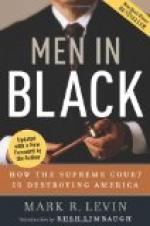If there is any complaint about the courts it is held to be the fault of the lawyers, if there are criticisms of the lawyers it is the fault of the courts. They are interdependent and indissoluble. If a club house is not suitable for its purposes, is old-fashioned, rickety, and dirty, it is the fault of the members. If the members do not behave the club house gets a bad reputation.
Courts are institutions, and not persons; the lawyers are the individual stockholders. If by his actions in court or in the club he brings disgrace on himself as a lawyer or upon his club, there is very little to be done about it. The club membership may be more limited and select, but the building will not be improved except that it may be swept a little cleaner.
The judge as the president of the club must see that the lawyers observe the rules, he can not rebuild the club house or materially change the rules. The only persons who can effect a change are the lawyers. As members, they are agents for their clients who are the public at large. Occasionally the public awakes to a realization of their power over both courts and lawyers, that they are their creatures; then happens a revolution in procedure and something is accomplished.
The lawyer waits about the courthouse for his case to be reached. It may take days or even weeks before it is marked ready. He wastes his time. The witnesses have been subpoenaed. They have to be told to come again the next day. There is little money in it for the lawyer. Office practice pays better than court work and except for the eminent pleaders there is but small honor.
During the trial the lawyer seems to be sparring. He takes the attitude of saying: “I want that point of law decided; it is such a nice point, it ought to be settled.” As a matter of fact he only wants it settled in his own favor. It is not the abstract interest but the concrete fact in which he is interested.
The lawyer is vigilant from the beginning of the trial to the end. After the case is marked ready he watches the jury, the other side, and the judge; any movement may be of importance; if it escapes his notice he may lose his whole case. It is not safe for him to go on the assumption that the other side is as honest as he is. If they should attempt to put in some evidence that is not proper, to offer a paper that is not duly authenticated, to try by some trick or device to take an unfair advantage, he must be ready to pounce upon the incident. If he is quick he may turn it to the advantage of his own side.
The other lawyer among a bundle of letters offers one that is only a copy or is not signed. The lawyer notices it but keeps still and when at the proper time calls the attention of the judge and the jury to the fact, the plain implication is that the other side must have a very weak case if it needs bolstering up by such methods as this. The argument is that he let the paper go in without objection because he thought the matter trivial anyway, and he wanted the jury to see the underhand method of the other side.




